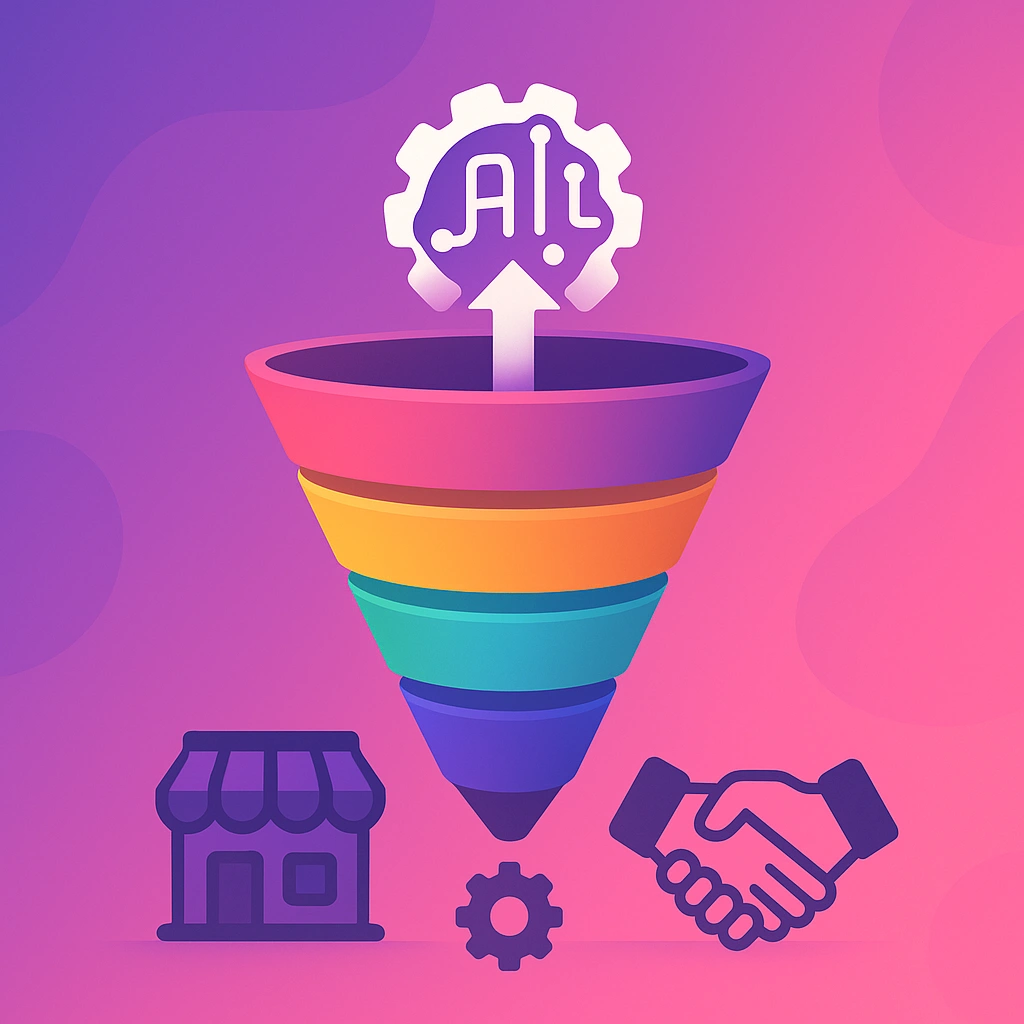Digital Transformation for SMEs: From Operational Efficiency with AI to Agentic Intelligence
Digital transformation doesn't start with technology. It begins with a need: doing more with less. For small and medium-sized enterprises, moving forward on this path requires much more than just adding platforms. A clear vision, an organized methodology, and results-driven decisions are essential.
At Digital Motus, we have helped dozens of companies rethink how they work, make decisions, and interact with their clients. What we've learned is that real digitalization happens in connected stages, from diagnosis to intelligent automation. And today, more than ever, artificial intelligence can be a key ally to scale without bureaucracy.
🔍 The Digital Transformation Funnel for SMEs
Our approach is based on a clear and proven model: five linked steps that enable sustainable evolution.
-
Strategic Diagnosis
The first step is to thoroughly understand the business: detect inefficiencies, map critical processes, and grasp real objectives. Good consulting doesn't start with tools, but with a deep understanding of current operations. -
Integrated Technological Architecture
The goal is to achieve a technological architecture that works as a single system. Coherently connecting software and platforms eliminates silos, automates tasks, and improves internal coordination. -
Process Systematization
At this stage, manual operational flows are transformed into digital ones. This means systematizing actions that were previously informal or scattered, achieving greater traceability, order, and speed. -
Data Intelligence
With digitalized processes, data can be consolidated and visualized in real time. This information becomes a management tool that facilitates agile and strategic decisions. -
Conversational Automation with AI
The final phase adds intelligence to interactions. AI tools allow you to automate responses, capture data from text or voice, and turn conversations into actions that feed management systems.
⚙️ Real Cases of Operational Efficiency with AI
Artificial intelligence is no longer science fiction. It's solving real problems. Here are some real cases we are starting to develop:
-
Virtual assistants for customer service
With a client in the real estate sector, we are automating the reception, classification, and routing of inquiries via WhatsApp and web. The goal: reduce response times, organize workflows, and scale without adding staff. -
Automatic document analysis
AI to read, structure, and extract data from contracts, budgets, or scanned forms. This avoids manual errors and speeds up repetitive tasks. -
Internal support with trained chatbots
We implement assistants that understand internal procedures, answer frequently asked questions, and help new employees integrate faster. -
Automated report generation
Language models that draft weekly summaries, management reports, or project follow-ups from structured data.
These cases have something in common: they impact efficiency without completely changing existing systems. AI is coupled as a layer of intelligence that streamlines processes.
🤖 What is Agentic AI and Why Does It Matter?
Until now, many AI solutions have been based on prompts, responses, or single tasks. But the new frontier is called agentic AI. What makes it different?
- It doesn't just respond, it acts.
- It has goals, not just instructions.
- It makes decisions based on context.
- It can autonomously execute complex tasks.
An AI agent can, for example, coordinate lead follow-up in a CRM, reschedule appointments based on availability, or monitor indicators and trigger alerts if there are deviations.
This allows a shift from reactive to proactive AI. And for many SMEs, it represents a way to incorporate operational intelligence without adding layers of management.
✅ Conclusion: It's Not About Technology, It's About Results
Digitally transforming a company is not a technical project; it's an organizational change. Technology is the means, but the goal is clear: work better, make data-driven decisions, and serve with intelligence.
At Digital Motus, we help companies make that leap. And we do it step by step, connecting strategy, processes, and innovation with an impact-focused approach.
Want to explore how to apply AI in your company? We're ready to support you.
— Digital Motus Team
